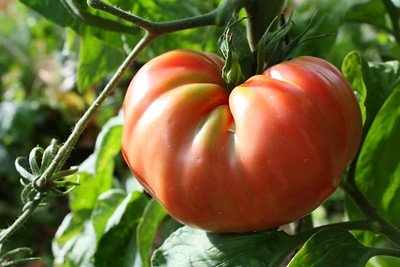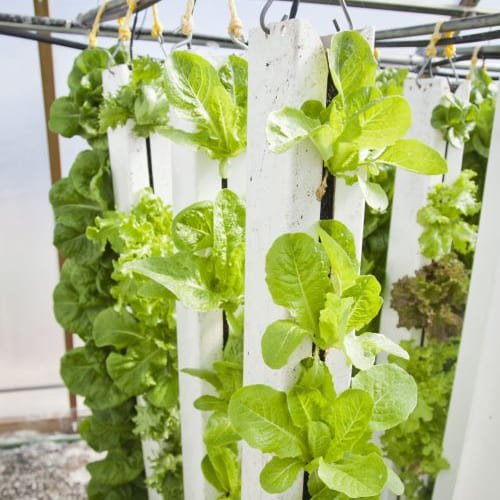There’s something magical about tomatoes, isn’t there? The way they transform from a tiny seed to a bountiful plant, bursting with vibrant fruits that are as sweet as they are satisfying. But what if I told you there was a way to supercharge your tomato garden? To harness the power of cross-pollination and breed tomatoes that are not just good, but extraordinary. That’s right—cross-pollination is the secret weapon of tomato growers who are seeking to enhance their crops’ flavor, texture, and resilience.
Now, we’ve had our fair share of tomato-growing experiences, both successful and not-so-successful, and one thing we’ve learned is that not all tomatoes are created equal when it comes to cross-pollination. Some varieties naturally cross-pollinate with ease, thanks to their ability to release more pollen or attract a wide range of pollinators. These cultivars can help you unlock the full potential of your garden. So, let’s dive into the world of tomatoes that are particularly good at cross-pollination and explore how you can take advantage of their unique characteristics.
What Makes a Tomato Ideal for Cross-Pollination?

Before we dive into the specifics, let me quickly paint the picture of what makes a tomato good for cross-pollination. Cross-pollination happens when pollen from one flower fertilizes the flower of a different plant. In tomatoes, this is particularly beneficial because it leads to hybrid vigor—tomatoes that are often stronger, more disease-resistant, and better in flavor. But not every tomato is created with this ability in mind. Some varieties are naturally more successful at cross-pollinating due to their larger flowers, higher pollen production, or the way they attract a variety of pollinators like bees and butterflies.
To make the most of cross-pollination, it’s important to focus on varieties that are genetically compatible and have traits that make them attractive to pollinators. When you combine the right varieties, you’ll start to see exciting results—more robust, flavorful, and resilient tomatoes.
1. Brandywine (Pink): The Pollinator Magnet
Brandywine is one of those heirloom varieties that every gardener dreams of growing. It’s large, sweet, and downright delicious. But Brandywine is also an excellent choice for cross-pollination. The reason? It has large, open flowers that release a decent amount of pollen, making it very attractive to pollinators like bees. The sheer size of the flowers makes it easy for insects to access the pollen, ensuring a higher likelihood of successful cross-pollination.
If you’re hoping to create a hybrid with both sweet, complex flavor and robust disease resistance, I recommend pairing Brandywine with a heartier variety like Big Beef. The combination of Brandywine’s flavor and Big Beef’s disease resistance could lead to a hybrid that is both flavorful and resilient.
2. Cherokee Purple: Flavorful and Ready to Cross
If you’ve ever tasted a Cherokee Purple tomato, you know what I mean when I say it’s one of the best-tasting heirlooms out there. This deep, dusky tomato brings an earthy, sweet flavor that’s perfect for fresh eating. Cherokee Purple’s flowers are large and beautifully fragrant, attracting a wide range of pollinators.
The variety is also known for its strong genetics, making it an ideal candidate for cross-pollination. By pairing Cherokee Purple with a more resilient or faster-growing variety (like San Marzano), you can create a hybrid that boasts both excellent flavor and increased disease resistance. And because Cherokee Purple is genetically diverse, the seeds you save from this hybrid could grow into even more fascinating variations.
3. San Marzano: The Sauce Tomato with Secret Powers
Ah, the San Marzano. If you’ve ever made pasta sauce from scratch, you know that this tomato is often touted as one of the best for cooking. Its rich, meaty flesh and perfect balance of sweetness and acidity make it a kitchen staple. But here’s the kicker: San Marzano tomatoes are also a top contender for breeding new cultivars.
San Marzano flowers aren’t as large as some of the other varieties I’ve mentioned, but their pollen production is significant enough to make them valuable in the world of hybrid tomatoes. Pairing San Marzano with a sweeter variety like Sweet 100 could yield a hybrid with both the heartiness of the Marzano and the sweetness of the cherry, resulting in a hybrid that’s perfect for both cooking and fresh eating.
4. Sweet 100: The Pollen Machine
Sweet 100 is a cherry tomato variety that’s known for its intense sweetness and high yields. But what really sets it apart for cross-pollination is its ability to attract pollinators. These small but prolific flowers are highly fragrant, drawing in bees, butterflies, and even hummingbirds. And because Sweet 100 is so productive, you’re likely to have multiple generations of successful pollination happening right in your garden.
Crossing Sweet 100 with a larger, more complex-tasting variety like Beefsteak could result in a hybrid that has the sweetness of a cherry tomato but the size and richness of a beefsteak. This hybrid could be the perfect option for gardeners looking for a versatile tomato that works in everything from salads to sandwiches.
5. Big Beef: Resilient and Ready to Hybridize
Big Beef is one of the most reliable tomato varieties in the garden. It produces large, meaty fruits that are perfect for slicing, and it’s known for its disease resistance and ability to handle less-than-ideal growing conditions. But when it comes to cross-pollination, Big Beef’s real strength lies in its hardiness.
Big Beef is self-pollinating, but it’s a fantastic parent for hybridizing with other varieties, especially if you’re looking to breed for resilience and disease resistance. Pair it with a flavorful, yet perhaps less disease-resistant variety like Yellow Brandywine, and you could create a hybrid with the perfect balance of taste and robustness.
6. Yellow Pear: A Pollinator’s Playground
Let’s not forget about the small but mighty Yellow Pear tomato. These bite-sized, yellow tomatoes are super sweet, and they’re known for their tiny, abundant flowers that attract pollinators like bees and hoverflies in droves. The plant is quick-growing and easy to manage, making it a great candidate for cross-pollination.
If you cross Yellow Pear with a heartier variety like Roma, you might end up with a hybrid that combines the sweetness of Yellow Pear with the thicker, meaty flesh of Roma—perfect for both snacking and cooking. This variety will not only attract pollinators but will also leave you with a stunning crop of tomatoes that are as versatile as they are flavorful.
Final Thoughts: Cross-Pollination as a Gateway to Innovation
Cross-pollination isn’t just about increasing your tomato yield or getting more vibrant plants. It’s about creating new, unique tomatoes that have the best traits of their parents. Whether you’re aiming for better flavor, higher disease resistance, or faster growth, cross-pollination offers a world of possibilities. By choosing varieties that naturally cross-pollinate well—thanks to their abundant pollen or ability to attract pollinators—you’re setting the stage for a tomato garden that’s not only productive but exciting.
So, as you plan your next tomato garden, think of it as an experiment. You’re not just planting tomatoes; you’re starting a journey of exploration. The perfect tomato hybrid could be just a cross away, and I can’t wait to see what you’ll create.



